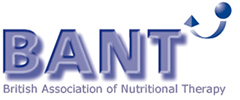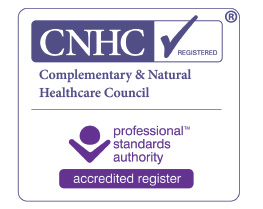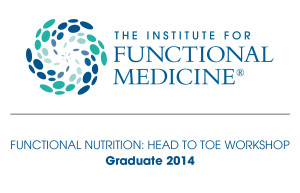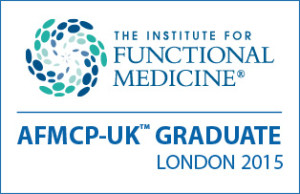Lipids and essential fatty acids for the health of your body and brain
This is the second of a four-part series on the fallacy of the low-fat and low saturated fat diet.
In the previous post I described how the low-fat and low saturated fat diet came to be promoted despite a lack of evidence for its efficacy in achieving its intended purposes of either reducing heart disease risk or for weight loss. I also outlined some of the mechanisms that could explain the huge increase in obesity in the USA despite of or in fact perhaps because of the reduction in fat consumption both in absolute terms and as a percentage of total caloric intake. In this post I will explain the importance of essential fatty acids and outline some more benefits of lipids and fatty foods for the health of your body and brain.
The importance of lipids
So why might we need lipids other than as an energy reserve?
Adipose tissue (fat tissue) cushions our organs to protect them from trauma and helps to regulate body temperature and provides a waterproof barrier for the skin. This adipose tissue can be made from carbohydrate but in order to relieve you of some of your fear of fat I will focus here both on the need for fat in the body and also on the need for dietary lipids as well as the micronutrients that are found in fatty foods.
The many functions of essential fatty acids
Essential fatty acids are polyunsaturated fatty acids that are so named because their dietary intake is believed to be essential for our health as they cannot be made from carbohydrates or from any other nutrients (1). However it is the longer chain polyunsaturated fatty acids like DHA and EPA found in oily fish, usually referred to as ‘conditionally essential fatty acids’, that are actually more essential to health than the shorter-chain essential fatty acids like alpha-linolenic acid in flaxseed from which a tiny amount of DHA and EPA can be made. These ‘conditionally essential’ fatty acids are made in meagre amounts from the shorter-chain ‘essential fatty acids’ but can be supplied in the diet directly (2) so I would argue they are in fact the more essential fatty acids to consume. In this post I will use the acronym EFA to include both essential fatty acids and these longer chain ‘conditionally essential’ fatty acids.
EFAs are vital for balancing blood lipids and for cardiovascular health, for insulin action, for your vision and for nervous system development (3). The fatty acids in human breast milk are 2% long chain polyunsaturated to support this development of the infant brain and vision and can improve intestinal repair following malnutrition (4). EFAs form eicosanoids which have roles in cell growth and fertility (5), in regulating smooth muscle contraction (6) and blood clotting (7) as well as both pro-inflammatory and anti-inflammatory immune system responses (8). EFAs are also helpful in maintaining gut wall integrity to prevent intestinal hyperpermeability (aka ‘leaky gut’) and the EFAs in breast milk thus help to seal baby’s developing gut wall to protect against infection and allergy (9). Omega-3 EFAs from oily fish reduce the platelet aggregation that is part of the process of blood clot formation and thus reduce the risk of heart disease (10).
Essential fatty acids and your genes
Besides all of these structural functions EFAs are now understood to function as intracellular signalling molecules, turning genes on and off (11) in a way that allows the human body to regulate fatty acid synthesis and oxidation for energy generation (12) as well as glucose storage as glycogen (13). The ability of EFAs to turn genes on and off also plays a role in the development of the infant brain and retina (14).
DHA for brain development and function
One of these long chain omega-3 fatty acids from oily fish is DHA, which is used to make resolvins and protectins which turn off inflammation when it has completed its purpose (15).
Your cell membranes are actually quite fluid and EFAs are vital for this fluidity which allows for effective communication between cells (16), especially in the brain, and this may be why DHA is vital for every stage of brain development and accumulates in areas of the brain associated with learning and memory (17). DHA is also neuroprotective, reduces neuroinflammation, is vital for the formation of synapses necessary for learning and is reduced in the brains of patients with Alzheimer’s disease (18). It should come as no surprise that EFA imbalances have been linked with depression, bipolar disorder, schizophrenia, ADHD and Alzheimer’s disease (19).
It is likely that our brain evolved the way it did because of long-chain omega-3 fatty acids from fish and seafood (20), giving us survival advantages such as the ability to make tools (21, 22), the beginning of technology itself.
For more information on omega-3 fatty acids and the safety of oily fish consumption as well as how vegetarians can boost omega-3 intake and conversion to the longer chain fatty acids needed by the brain see here.
Fat and cholesterol to preserve cognition
A further clue as to the importance of fat for neurological health is that your brain is 60% fat by dry weight (23) and 25-30% of these are polyunsaturated (24). Fat is a vital component of myelin sheath which insulates the neurons so that they can transmit impulses efficiently (25) and quickly (26).
The cholesterol that comes with fatty animal products also has some vital functions in the brain as I described in 10 Reasons You Need Cholesterol – Part 1 and since the brain contains only 2% of the body’s mass, but 25% of the total cholesterol (27), it should not be surprising that higher cholesterol levels are associated with improved memory in old age (28) and a decreased risk of developing Alzheimer’s disease (29).
The brain’s need for lipids may explain why low-fat dairy produce but not high-fat dairy produce is associated with an increased risk of Parkinson’s disease (30).
Coconut oil may be beneficial for Alzheimer’s disease as the medium chain saturated fatty acids are readily converted into ketones which provide an alternative fuel source for neurons that have become insulin resistant and can not therefore utilise glucose efficiently (31, 32, 33). That Alzheimer’s disease has been dubbed ‘Type 3 Diabetes’ (34) should also make us wonder to what extent the Alzheimer’s epidemic coincides with increased carbohydrate intake as a result of the low-fat diet, causing the neurons to become insulin resistant. Coconut oil is also a source of phenolic compounds that may help prevent the formation of amyloid-beta plaque (35) which is one of the hallmarks of a brain with Alzheimer’s disease, though the plaque is not necessarily a cause of Alzheimer’s disease.
The evolution of multicellular life is dependent on fat
Fats are in fact vital for cell membranes which allowed cells to specialise and thus fats are foundational for multicellular life (36). Lipids make up around 50% of your cell membranes and phospholipids are considered to be the fundamental building block of all of your cell membranes, not just in your brain (37). The lipids in your cell membranes are vital for communication between cells and for the transport of molecules such as proteins, lipids, hormones and neurotransmitters into and out of the cell (38). Some of these lipids can be made by your body from carbohydrate if needed, but as I have demonstrated above essential fatty acids are vital for cell membrane fluidity and most come in from your diet.
The low-fat diet as a low micronutrient and low phytochemical diet
So you can see that lipids are necessary for the brain and for all of your cell membranes throughout your body, but fatty foods also tend to also be rich in essential micronutrients and low-fat diets will often be lower in calcium, zinc, magnesium, phosphorus and vitamins B1, B2, B3, B12 and E (39).
Fatty foods are good sources of fat soluble micronutrients such as vitamin A (40) vitamin E (41), vitamin K2 (42) and CoQ10 (43).
Vitamin D is actually made from the cholesterol precursor 7-dehydrocholesterol by the action of ultraviolet B radiation from sunlight on your skin (44) and though your body will make cholesterol in times of need this might make you question whether dietary lipids really are your enemy.
The olive oil that is central to the Mediterranean diet is beneficial for heart disease and certain cancers not just because of its high monounsaturated fat content but also due to its phenolic compounds and antioxidants which help prevent the oil from oxidising (45) and thus make it safer for cooking (46). A good quality olive oil even retains much of its nutritional value after cooking (47). Extra virgin olive oil may also be helpful in weight loss (48). It is the desirable bitter and pungent elements of olive oil that reflect its phenolic content (49), which might remind you that hormesis is at play here, so choose the more bitter and pungent extra virgin olive oil over the more refined olive oils.
Nuts are a high fat food that also provide beneficial polyphenols, minerals, fibre, vitamin E, and arginine to help lower blood pressure and reduce heart disease risk (50, 51) and frequent nut consumption is associated with reduced obesity (52).
Dietary fat increases micronutrient and polyphenol absorption
Including fats or oils in your meals also increases the absorption of fat soluble micronutrients such as vitamins A (53), K1 (54, 55), K2 (56, 57) and E (58, 59) , CoQ10 (60), and carotenoids (61, 62) including lycopene (63) and provitamin A carotenoids and the fats also promote the conversion of provitamin A carotenoids into vitamin A (64).
Vitamin K2, for example, helps prevent calcium from being deposited in arteries rather than in your bone (65, 66) and thus benefits heart and bone health. Vitamin K2 also has roles in brain function (67), improves insulin sensitivity (68) and is very commonly deficient in cancer (69).
Adding avocado to a meal increases absorption of the carotenoid lutein sevenfold which may protect your eyes from blue light, and improves cognitive function, being the most predominant carotenoid in the brain (70). Lutein may also reduce the risk of heart disease and protect your skin from ultra-violet radiation (71).
Dietary fat also increases the absorption of some key polyphenols such as quercetin and curcumin, the most studied polyphenol in turmeric. The fat in dark chocolate, which is mostly saturated fat, increases the absorption of some of the beneficial polyphenols (72). Two key polyphenols in olive oil are readily absorbed from the oil but less well absorbed when extracted from the oil and in aqueous solution (73), and olive oil consumed with a meal increases the absorption of polyphenols (74) and lycopene (63) from tomato, which might remind you how common this combination is in the Mediterranean diet.
One study even found that the heart-protective benefits of eating fruit and vegetables were only realised when combined with choosing high-fat rather than low-fat dairy produce, though we do not know if this is due to the actual combination of these foods at the same meals or due to other negative effects of choosing low-fat dairy counteracting the benefits of increased fruit and vegetable intake (75).
In fact I want to be clear that the correlation of low-fat dairy produce with increased heart disease risk markers does not prove that low-fat dairy produce causes heart disease. It may be, however, that people who choose low-fat are generally trying to be healthy, though the choice to eat low-fat is misinformed, so they are likely to also be making other dietary and lifestyle choices that are generally seen as healthy. This could hide some of the possibly negative effect of choosing low-fat options, although some of their other choices might also be misguided.
In this post I have outlined the importance of essential and conditionally essential fatty acids and the importance of lipids in your brain and in cell membranes, which allowed for our evolution as multicellular organisms and as organisms whose brain development led to distinct survival advantages. I also spoke about micronutrients and polyphenols in fatty foods and how fats and oils increase the absorption of key micronutrients.
In the next part of the series I will focus more on saturated fat.
Did you realise just how essential fats are to our health and to our brain health in particular, and how essential fats have been to our evolution as human beings? Let me know in the comments below.
Read Part 3, learn more about my work in London and Totnes, or find out about online consultations.
SIGN UP TO THE NEWSLETTER TO BE NOTIFIED WHEN EACH NEW POST IS RELEASED.
Related posts:
The Low-Fat Fallacy – Saturated Fat Is Good for You – Part 1
The Low-Fat Fallacy – Saturated Fat Is Good for You – Part 3
The Low-Fat Fallacy – Saturated Fat Is Good for You – Part 4
10 Reasons You Need Cholesterol – Part 1
10 Reasons You Need Cholesterol – Part 2
Which Fats and Oils for Optimal Health?
Hormesis – Do Toxins Make You Stronger? – Part 1
Hormesis – Do Toxins Make You Stronger? – Part 2






Leave a Reply